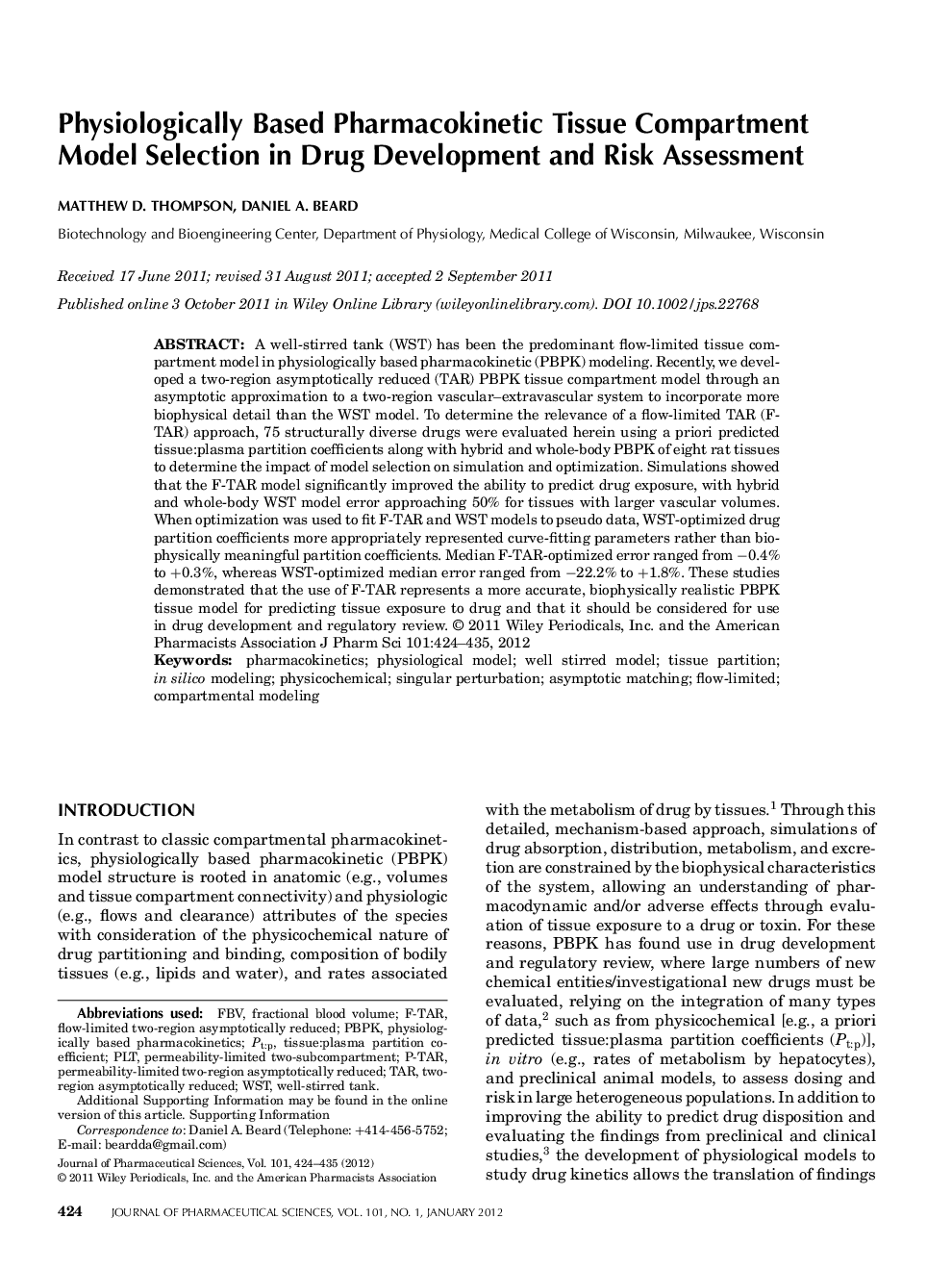| کد مقاله | کد نشریه | سال انتشار | مقاله انگلیسی | نسخه تمام متن |
|---|---|---|---|---|
| 2485427 | 1114354 | 2012 | 12 صفحه PDF | دانلود رایگان |
عنوان انگلیسی مقاله ISI
Physiologically Based Pharmacokinetic Tissue Compartment Model Selection in Drug Development and Risk Assessment
دانلود مقاله + سفارش ترجمه
دانلود مقاله ISI انگلیسی
رایگان برای ایرانیان
کلمات کلیدی
موضوعات مرتبط
علوم پزشکی و سلامت
داروسازی، سم شناسی و علوم دارویی
اکتشاف دارویی
پیش نمایش صفحه اول مقاله

چکیده انگلیسی
A well-stirred tank (WST) has been the predominant flow-limited tissue compartment model in physiologically based pharmacokinetic (PBPK) modeling. Recently, we developed a two-region asymptotically reduced (TAR) PBPK tissue compartment model through an asymptotic approximation to a two-region vascular-extravascular system to incorporate more biophysical detail than the WST model. To determine the relevance of a flow-limited TAR (F-TAR) approach, 75 structurally diverse drugs were evaluated herein using a priori predicted tissue:plasma partition coefficients along with hybrid and whole-body PBPK of eight rat tissues to determine the impact of model selection on simulation and optimization. Simulations showed that the F-TAR model significantly improved the ability to predict drug exposure, with hybrid and whole-body WST model error approaching 50% for tissues with larger vascular volumes. When optimization was used to fit F-TAR and WST models to pseudo data, WST-optimized drug partition coefficients more appropriately represented curve-fitting parameters rather than biophysically meaningful partition coefficients. Median F-TAR-optimized error ranged from â0.4% to +0.3%, whereas WST-optimized median error ranged from â22.2% to +1.8%. These studies demonstrated that the use of F-TAR represents a more accurate, biophysically realistic PBPK tissue model for predicting tissue exposure to drug and that it should be considered for use in drug development and regulatory review. © 2011 Wiley Periodicals, Inc. and the American Pharmacists Association.
ناشر
Database: Elsevier - ScienceDirect (ساینس دایرکت)
Journal: Journal of Pharmaceutical Sciences - Volume 101, Issue 1, January 2012, Pages 424-435
Journal: Journal of Pharmaceutical Sciences - Volume 101, Issue 1, January 2012, Pages 424-435
نویسندگان
Matthew D. Thompson, Daniel A. Beard,